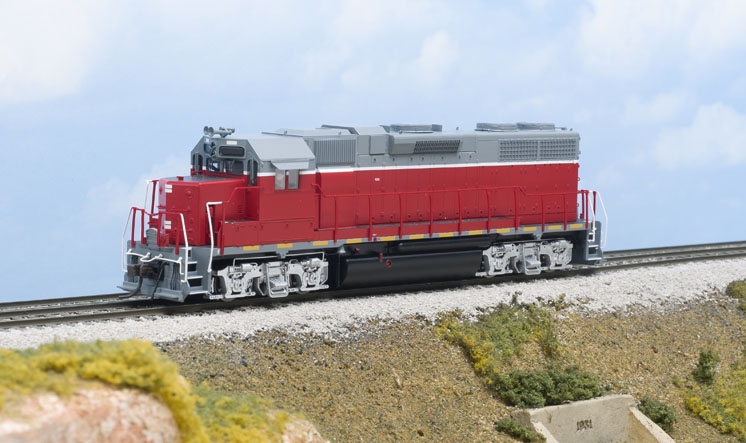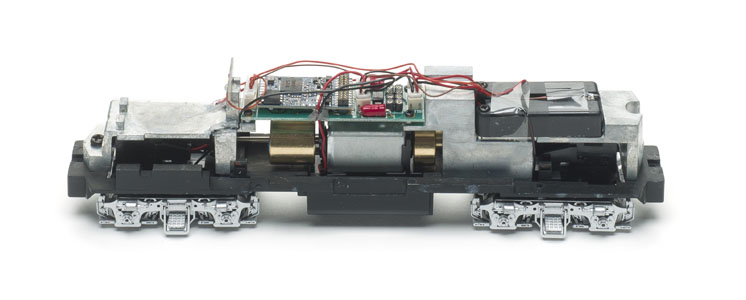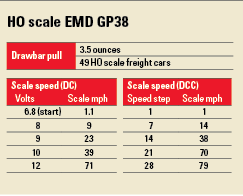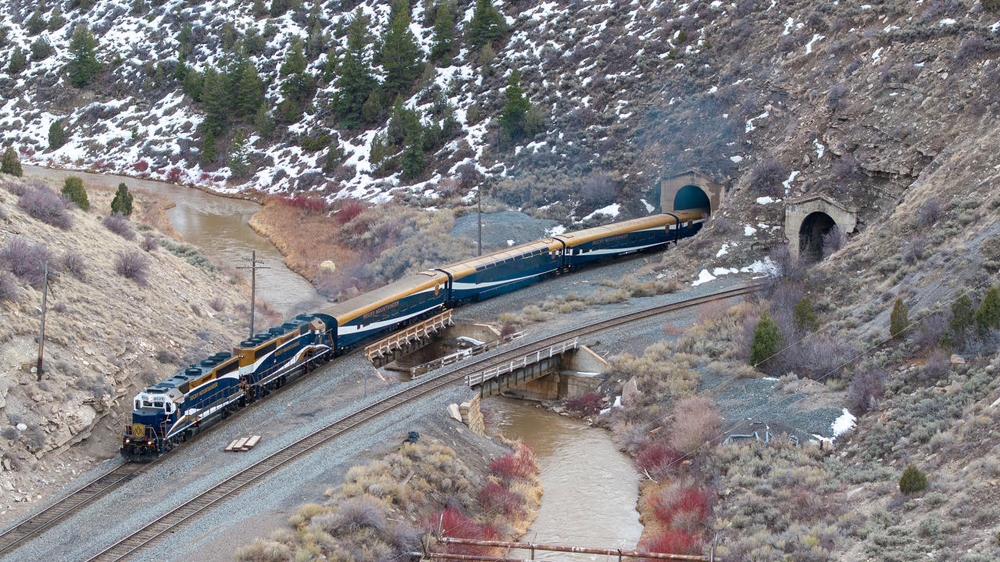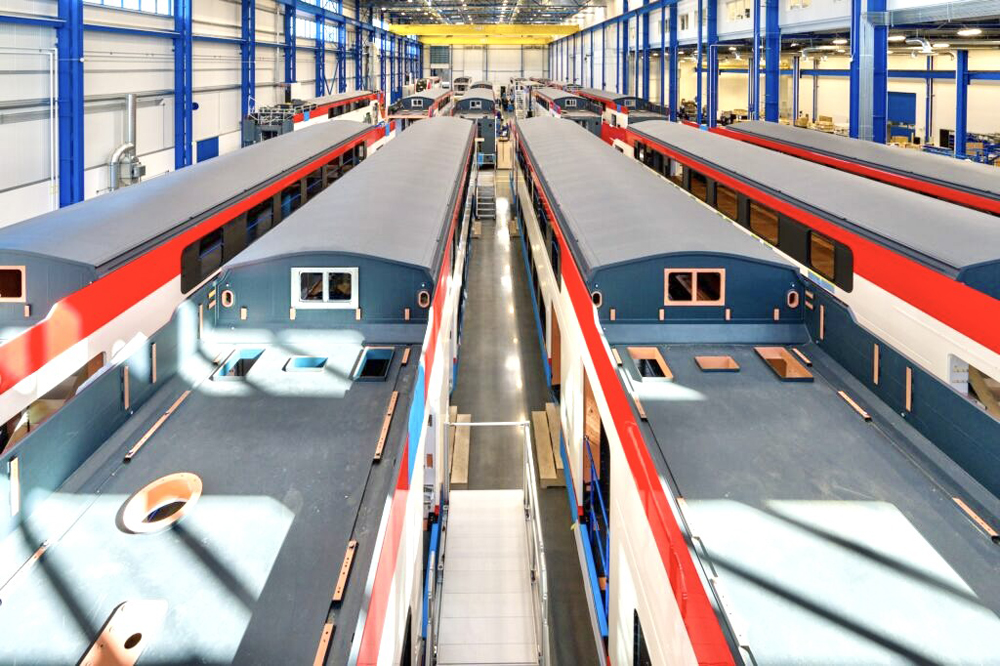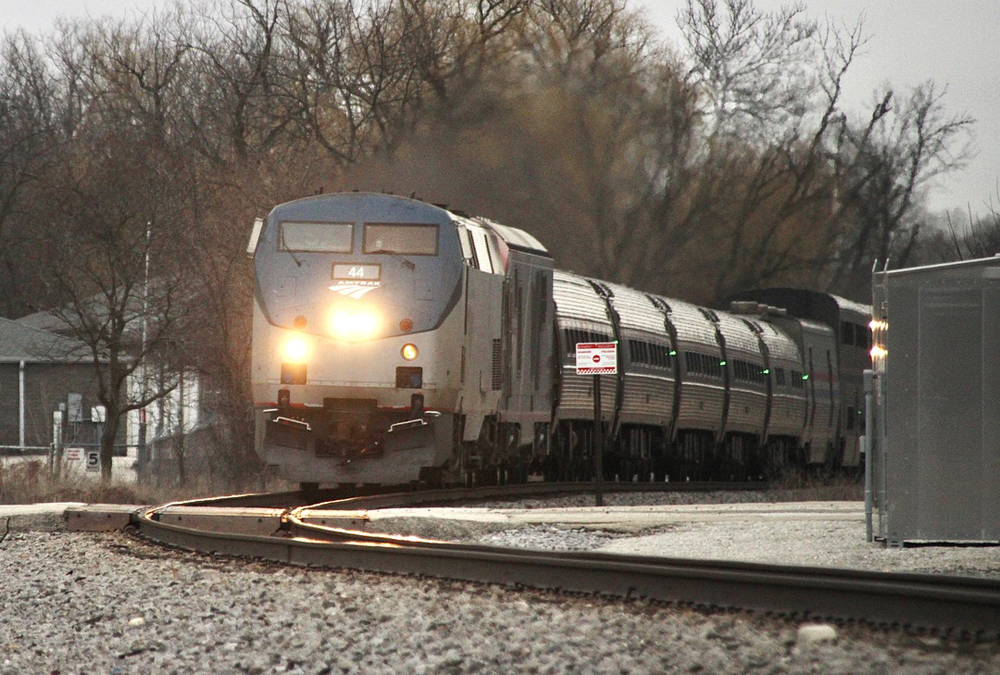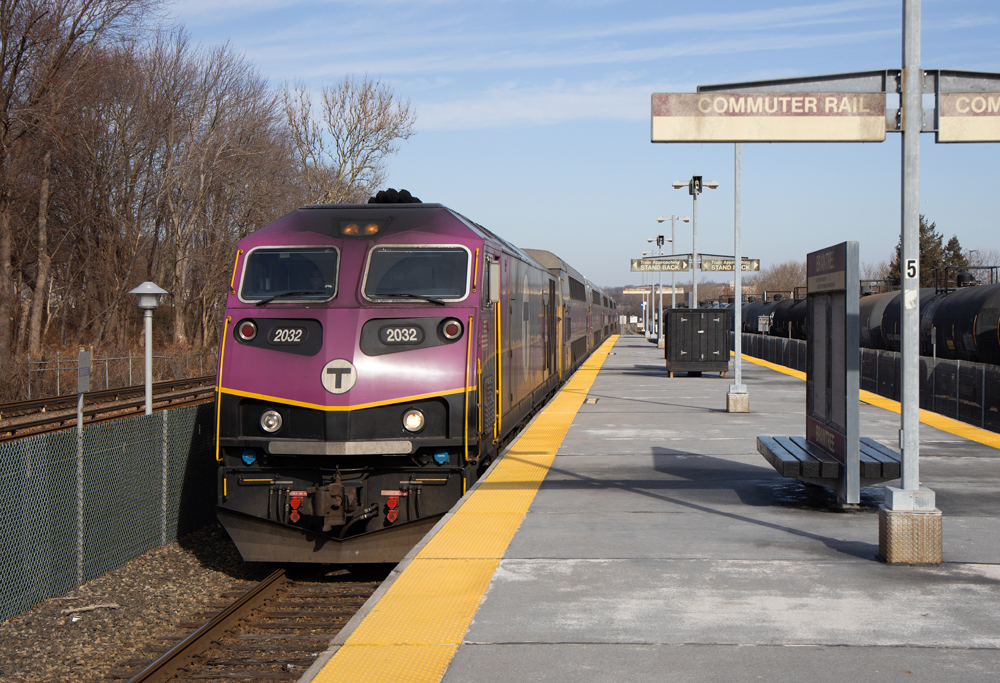I heard the realistic rumble of the Electro-Motive Division 645 diesel engine when I set the Atlas HO scale GP38 on the rails of our test track. The biggest upgrade of this latest release of the GP38 is that it now comes factory-equipped with an ESU LokSound Select dual-mode decoder that provides realistic sound on Digital Command Control (DCC) and direct-current (DC) layouts.
Senior editor Jim Hediger reviewed the first release of the Atlas locomotive in our January 2001 issue. Atlas is now offering its GP38 in several new paint schemes, and with new numbers for existing schemes.
The prototype. As the horsepower wars heated up in the mid-1960s, locomotive builders aimed to produce diesel-electrics that would double the output of first-generation engines. But some railroads didn’t want 3,000 hp locomotives and the complexities that went with them, so General Motors’ Electro-Motive Division offered the 2,000 hp GP38.
Electro-Motive Division built 727 GP38s between 1966 and 1971. Offered at the same time as the GP40, the GP38 featured a non-turbocharged 16-cylinder 645E diesel engine. The simpler Roots blower on the engine intake system was a selling feature to cost-conscious railroads because it cost less to maintain and reduced the cost of the locomotive.
In all, 25 railroads, from short lines to Class 1s, ordered GP38s. The GP38 was replaced by the GP38-2 in 1972. These dependable locomotives often continued their careers with second or even third owners, showing up on the rosters of regionals and short lines well into the 2000s.
The model. Our review sample is painted in RailAmerica’s red-and-gray scheme, but unlettered. This allows the model to be finished in any one of the roads that RailAmerica operates, but it’s up to the modeler to supply decals. The model is also an early version GP38 with a modified dynamic brake blister to accommodate a paper air filter in place of the original equipment oil-bath air filter.
It’s equipped with a 3,600-gallon fuel tank. Atlas offers a 2,600-gallon tank on some models, and it’s listed as an available part on the exploded-view diagram. Photos of red-and-gray RailAmerica locomotives had either type of tank. I couldn’t find a photo of an RA locomotive with the horn mounted above the headlight. All the photos I saw had horns mounted on the long hood between the dynamic brake fan and the radiator fans.
The model is well equipped with separate add-on details, including wire grab irons and lift rings, windshield wipers, cab sunshades, positionable drop steps, see-through end steps, and diamond plate walkways. The model matches dimensions published in the August 1967 issue of Railroad Model Craftsman.
The flexible plastic handrails are scale-sized and painted to match the body shell. Paint was applied evenly, with sharp separations between the colors and the white stripe between them. Warning signs on the long hood doors were all legible.
Under the hood. To remove the shell, I took off the couplers and fuel tank (it snaps off, but be careful of the brake piping). Then I used a small screwdriver to separate the body shell from the frame.
A can motor with two brass flywheels is mounted above the fuel tank area. Plastic and metal driveshafts transmit power to the trucks, driving all eight wheels. Die-cast metal weights are screwed to each end of the frame above the trucks, and a printed-circuit (PC) board is screwed to the weights.
The ESU LokSound Select Digital Command Control (DCC) decoder plugs into the PC board. A downward-facing speaker is mounted to the weight above the rear truck, and the locomotive picks up power from all eight wheels. The engine weighs 13.9 ounces.
Performance. As a dual-mode decoder-equipped locomotive able to run on DC or DCC layouts, the Atlas GP38 performed well on direct current (DC). The LokSound Select decoder played an engine start-up sequence at 6V, and the locomotive started to move at 6.8V at 1.1 scale mph. At 12V, the locomotive reached a prototypical 71 scale mph.
Screeching brake sound effects played when I quickly reduced the throttle setting as the locomotive came to a stop. As long as I kept the Model Rectifier Tech 4 power pack set above 6V, I could switch direction without the decoder replaying the start-up sequence. Only engine sounds and associated random sound effects play in DC. A DCC throttle or analog sound controller such as an MRC Tech 6 is necessary to access further sounds.
On DCC, the locomotive started moving in speed step 1 at 1 scale mph. It reached a top speed of 79 scale mph in speed step 28, within range of the prototype’s available gearing.
Thanks to its back-electromotive-force (back-EMF) control, the model rolled smoothly at low speed. Even with a train in tow, the locomotive kept an HO scale walking pace up a 3 percent grade. The automatic motor tuning feature ensures that the back-EMF settings are adjusted to a particular locomotive and operating environment.
The decoder also features many configuration variables (CVs) for fine-tuning locomotive performance, including setting up custom or preset speed tables.
A feature I really enjoy is the factory-programmed momentum that allows the diesel engine rpm sound to spool up before the locomotive moves, just as it does on the prototype. Although the factory settings were enough for me, there are CVs for further adjusting the acceleration and deceleration and every other aspect of the locomotive’s performance. A free user manual is available as a PDF download at www.esu.eu.
Testing the locomotive on Model Railroader’s club layout, the Milwaukee, Racine & Troy, I had fun switching cars on the Wisconsin & Southern Troy branch. Pressing F7 enables switching mode and doubles the speed steps for precise slow-speed control. It was easy to bring the locomotive up to a cut of cars slowly to couple up smoothly. I also enjoyed using manual notching in the yard, where I could increase or decrease engine rpm using function keys, independently of the locomotive speed.
In addition to the bell and horn, user-triggered sound effects include cab radio communication and a talking defect detector. All the sound effects feature individual volume control and all functions can be remapped to any throttle key.
Although our unlettered review locomotive didn’t have a cab number, I tested out the address programming. I easily programmed the decoder for 2- and 4-digit addresses, and then reset everything back to factory defaults. I also easily advanced consisted the locomotive for multiple-unit operation.
As Atlas continues to bring out new paint schemes for this model, I’m sure it will prove to be as popular with hobbyists as the prototype was with full-sized railroads.
Price: $149.95, DC, no sound; $259.95, DCC and sound
Manufacturer
Atlas Model Railroad Co. Inc.
378 Florence Ave.
Hillside, NJ 07205
www.atlasrr.com
Era: 1966-present (depending on paint scheme)
Roadnames: Early version with paper air filter and modified dynamic brake blister: RailAmerica (unlettered), Central Oregon & Pacific, Connecticut Department of Transportation (New Haven), Louisville & Indiana, Terminal RR Association of St. Louis, Vermont Ry. (RailAmerica patchout), and undecorated.
Late version with paper air filter and modified dynamic brake blister: Alaska RR, BNSF Ry., Iowa Interstate, Maryland Midland, Norfolk Southern (horsehead herald, “First Responders” and “Operation Lifesaver schemes”), North Shore, and undecorated.
Features
▪▪5-pole skewed armature motor with dual flywheels
▪▪Accumate knuckle couplers at correct height
▪▪Detailed cab interior with crew
▪▪Die-cast metal chassis
▪▪Directional LED lighting
▪▪Trainline and m.u. hoses
▪▪Weight: 13.9 ounces





